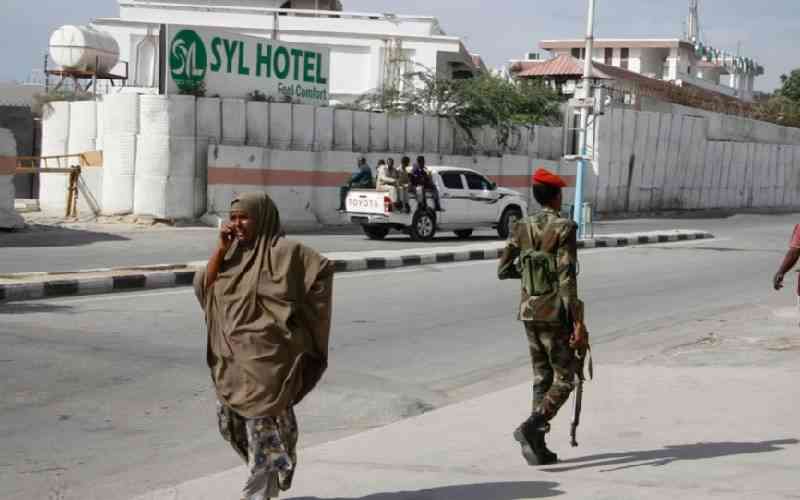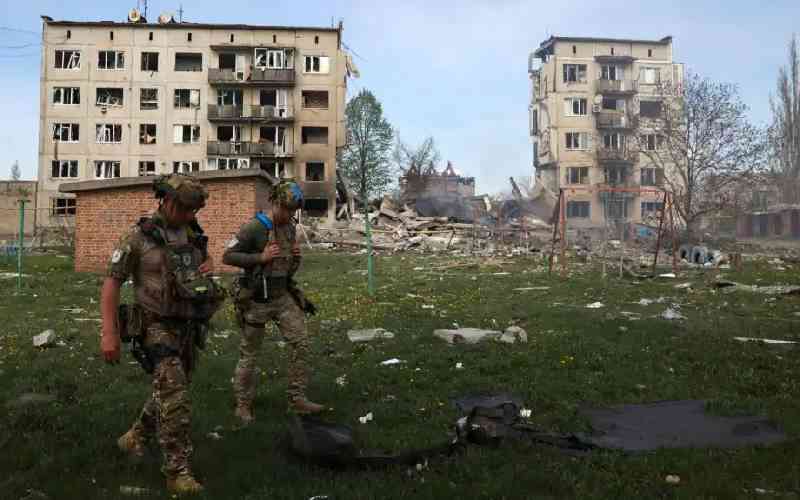Before the July 2010 Kampala bombings, the general consensus within Kenyan security agencies was that the Al-Shabaab was basically Somalia’s headache and the role of some neighbouring states such as Kenya was to keep our borders tight.
“The sentiments were that as long as we were a step ahead of them, then our territory would be safe,” says security expert George Musamali. “But in the event that they walked at the same pace with us, or outpaced us, then what would happen?”
Musamali believes the terrorists are frequently ahead of our security forces. “But in this business, even being half ahead means loss of lives.”
However, the consensus shifted as more Kenyan nationals were implicated in attacks in Somalia. Not only did the Al-Shabaab recruit fighters in Kenya, it also sourced for suicide bombers within our borders.
An Institute of Security Studies (ISS) report shows that on April 19, 2007, a suicide bomber detonated his device as he crashed a vehicle through the gates of the Ethiopian army base in Mogadishu. The explosion caused further secondary blasts due to its proximity to nearby munitions. Al-Shabaab identified the suicide bomber as a Kenyan national, Othman Otayo.
War and terror
In early October 2011, another Al-Shabaab suicide bomber drove an explosives-laden vehicle into a checkpoint at the entrance to Somalia’s Ministry of Education in Mogadishu. The blast killed over 65 people.
A couple of weeks later, during a media briefing in Nairobi, a Kenya Defence Forces spokesperson, while outlining some of the reasons why Kenyan soldiers were deployed to Somalia to pursue the Al-Shabaab, said the person who carried out the attack in the Somali capital was a Kenyan national from Kiambu, a semi-rural town on the outskirts of Nairobi.
By this time, however, the damage was already seemingly done as it became apparent that an unknown number of Kenyans had been recruited into Al-Shabaab. And after Kenya’s incursion into the war-ravaged country, the terrorists were prepared to bring war and terror to Kenya as the KDF pacified remote territories. The stage had been set even before Kenya’s march to Kismayu began.
As early as 2009, Al-Shabaab militants, together with officials from the Transitional Federal Government (TFG) of Somalia, were actively recruiting Kenyans from different walks of life into their ranks. That same year, HRW released a damning report showing the widespread recruitment of Kenyans into both these groups.
HRW investigations found that recruiters for the new force have used deceptive practices, promising exorbitant pay and claiming that the force has United Nations and other international backing. They have urged teenage refugees to lie about their ages and to join without informing their families. Former recruits say that their cellphones were taken from them before they were transported to the training centre.
“Top Kenyan officials including the Foreign Minister have categorically denied this recruitment drive is taking place at all, but in fact it is operating with direct Kenyan support, including Government transport vehicles and guards,” reads the HRW report. Foreign Affairs minister at that time was CORD co-principal Moses Wetang’ula.
“It is common knowledge that with the help of the Kenyan Government, the Somali Government recruited massively, around 3,000 men into their ranks,” says ISS security analyst Dr Emanuel Kisiangani. Only a fraction of these recruits made it to their bases in Somalia.
“After being trained in Manyani by our forces, many of these young men did not make it to Somalia. Some disappeared and melted into the general population before departure while others were literally jumping off moving trucks,” Kisiangani says. “Many are thought to have changed allegiances and joined the militants.”
At that time, Al-Shabaab, still in control of Kismayo and other major ports could offer, and often met promises of better and regular pay. The exodus was on and it was only a matter of time before these Shabaab and formerly government-trained individuals came back to their motherland, newly indoctrinated into their belief in false Jihad.
Stay informed. Subscribe to our newsletter
Numbers, as with most government-backed security operations remain sketchy. A denial of this largely accepted truth from the then Foreign Minister is on record. As the TFG deserters flocked the rugged training camps, a more direct approach to recruitment was being carried out by the militants. The hopelessness and desperation in Daadab refugee camp provided too much of an allure for their recruiters.
Proof of heavy involvement of Kenyans in Shabaab matters came in January 2012 when Sheikh Ahmad Iman Ali, an engineering graduate, was announced as the group’s “Supreme Amir”. The video of this announcement was in Swahili, perhaps indicating that this was a message by Kenyans to fellow Kenyans.
“Their recent ambushes show an intricate almost personal knowledge of the areas they operate in. Looking at all the attacks including West Gate, we are clearly dealing with a group of individuals who are confident on Kenyan soil, some speak our national languages, and with considerable military training,” security expert Ngetich Bitok argues.
Not a picnic
The exact number of Kenyans recruited into TFG remains foggy, but analysts argue that the influence that these former recruits have had on the terror group are clear for all to see. “No one knows where they went,” Kisiangani says. On October 23, 2011, Mandera Senator and The Standard on Sunday Columnist Billow Kerrow wrote thus of the Somali incursion: “A war is not a picnic. There are both human and economic costs...we can ill afford a long drawn-out war with an amorphous enemy. We will create more refugees, headed to our borders.
With corruption part of our culture, maintaining security along the border has been a failure. There is still time for our leaders to rethink and pull out of this war.” But when we do if we will, one question still lingers: Where and why were Kenyans recruited into the TFG? What was their cause and where are they now?
For the moment, a prayer for our troops in Somalia will do.
 The Standard Group Plc is a
multi-media organization with investments in media platforms spanning newspaper
print operations, television, radio broadcasting, digital and online services. The
Standard Group is recognized as a leading multi-media house in Kenya with a key
influence in matters of national and international interest.
The Standard Group Plc is a
multi-media organization with investments in media platforms spanning newspaper
print operations, television, radio broadcasting, digital and online services. The
Standard Group is recognized as a leading multi-media house in Kenya with a key
influence in matters of national and international interest.
 The Standard Group Plc is a
multi-media organization with investments in media platforms spanning newspaper
print operations, television, radio broadcasting, digital and online services. The
Standard Group is recognized as a leading multi-media house in Kenya with a key
influence in matters of national and international interest.
The Standard Group Plc is a
multi-media organization with investments in media platforms spanning newspaper
print operations, television, radio broadcasting, digital and online services. The
Standard Group is recognized as a leading multi-media house in Kenya with a key
influence in matters of national and international interest.








